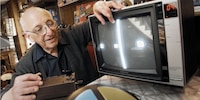
Guide
Father of video games: the life of Ralph Baer
by Kevin Hofer
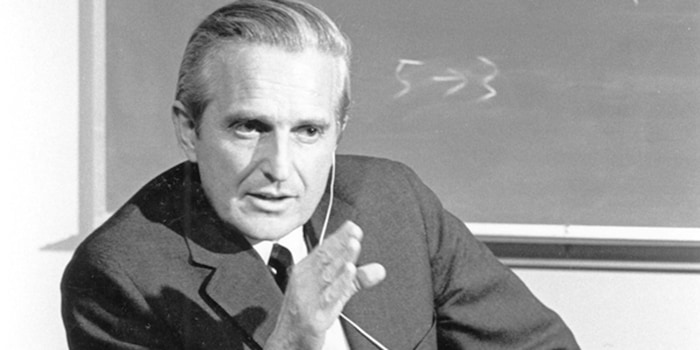
Douglas Engelbart and his inventions are essential to how we use computers today. This visionary farm boy from Portland gave us the mouse, contributed to the development of the Internet and even advanced graphic interfaces.
A lot happened in 1961. While East Berlin starts construction on its new wall, barriers are being broken down in other places: on board the Wostok 1, Yuri Gagarin becomes the first human in space. New US president John F. Kennedy wants to use his New Frontier policy to help race relations in the United States.
Douglas Engelbart isn't attracting as much attention. One morning in 1961, he's at a computer graphics meeting at the Stanford Research Institute – SRI for short – in Menlo Park, California. While there, he wonders how to increase efficiency when working with computers. Engelbart is already envisioning a user interface for controlling computers. He comes up with a nifty solution: two wheels being dragged across a desk. One turns vertically, the other horizontally. A computer could track the movements of both and move a cursor on-screen accordingly. The computer mouse is born. An idea that will revolutionise the way we use computers. But the story of the mouse goes hand in hand with Engelbart's tale, the story of a visionary way ahead of his time.
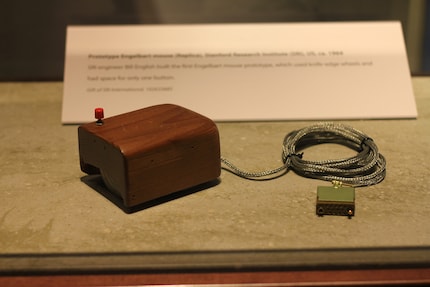
Engelbart grew up on a farm near Portland. After two years of service as a Marine radar technician in the Philippines during World War Two, he got his Bachelor's degree in Electronics from Oregon State University in 1948. But his work soon stopped fulfilling him. In 1951, he's inspired to change his career, one that will define the rest of his life.
He starts thinking about his goals in life and how he can help create a better world as an engineer. He starts researching computers, and how they can help humanity solve problems. Engelbart's vision is to connect all humanity with one network using computers. We would be able to exchange and update information in real-time. He combines this idea of collaborative software with his experiences in interpreting radar signals. This finally brings him to connected computers with a graphic user interface.
What seems natural in hindsight seems impossible to most during the early 1950s. Computers are the size of a room, and aren't much stronger than modern calculators. The only way to input and extract data is with a punch card. And this is the field Engelbart enters when he joins the University of California, Berkeley's electronics faculty in 1955. He later accepts a job at the Stanford Research Institute – now SRI International.
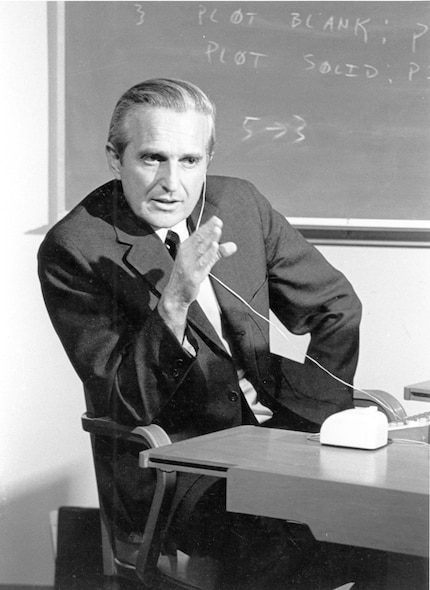
About a year after Engelbart first thinks up the mouse, he gets a research grant at SRI. His research initiative is called «Augmenting Human Intellect». He envisions people working at powerful interactive screen computers, with access to a gigantic trove of online information that they can use to cooperate on important problems. With free access to everyone. He gathers a small research team and sets up a laboratory.
In the mean time, there are several ways to move and select things on-screen using a cursor. But no one really knows which way is the most efficient yet. Engelbart gets a small bonus from NASA to go after this question.
The team collects the best peripheries available and builds a prototype, which they also test, to compare them. Including the mouse. Lead engineer Bill English builds the prototype according to Engelbart's notes. The first mouse is a wooden block with two wheels underneath and a button on top.
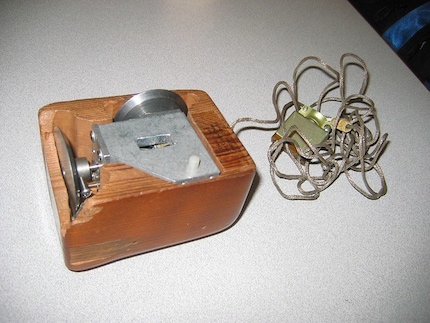
The mouse absolutely demolishes its rivals such as the joystick, foot pedal and light pen. The research initiative «Augmenting Human Intellect» now uses the mouse as one of their core tools. In 1967, the SRI applies for a patent called the «x,y position indicator for a display system». It gets approved in 1971. Engelbart doesn't remember who came up with the term «Mouse». But in a 2004 interview, he says that he was surprised the term stuck around this long.
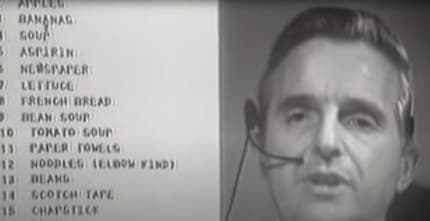
But the mouse is just a small cog in Engelbart's grand vision. His goal was to revolutionise how we work together. He sees the computer as a new medium to advance technological progress in science. Due to the technology available at the time, his research agenda requires his team to nearly go beyond the realms of possibility. He needs to expand the borders of display technology and interactive computing as well as the human-computer interface. This includes introducing network computing, data management, digital libraries, software engineering with computer support, client-server architecture, the mouse and so on. Engelbart's vision also requires the invention of completely new organisational concepts and methods on the human front.
In 1968, a year of sweeping social change, Engelbart unveils his computer revolution. Instead of hitting the streets like so many idealists in 1968, he's a speaker at that December's San Francisco Fall Joint Computer Conference. He completely blows everyone away with his 90-minute demonstration. He shows off almost everything that makes up modern computing: video conferences, hyperlinks, connected work, digital text processing and of course the mouse. Engelbart's presentation goes down in history as the «Mother of all Demos». But it's only called that much later. Because no one, not even the SRI, seems to recognise to what scale these inventions will revolutionise our ways of life.
This collaborative real-time computing system, oN-Line System – NLS for short – seems barely plausible at that time. With the help of NLS, Engelbart and a colleague at Menlo Park worked on the same document in the same window. Using a mouse and keyboard. At the same time, Engelbart holds the world's first ever computer video conference in a different window.
Engelbart basically showed us a modern workplace. In 1968. At a time where not even half of all TV programs where available in colour.
Those present and the media are amazed by Engelbart's presentation. The man in question continues his research, building more and more nifty peripheries and displays, improving graphic user interfaces. However, his presentation at the Fall Joint Computer Conference and the connected reach of Engelbart's inventions are quickly forgotten. Engelbart isn't able to convince the SRI or any other potential investors of his vision. This is probably also why SRI slashes his research budget. As a result, many of his co-workers leave for greener pastures, such as the tech company Xerox.
But Engelbart stays loyal to the SRI. At least until the institute sells his NLS to the telephone network company Tymshare. Engelbart continues believing in his inventions, and continues development at Tymshare.
In 1980, Engelbart signs a licensing contract to Apple co-founders Steve Jobs and Steve Wozniak involving the mouse patent. When they debut the Macintosh in 1984, Tymshare is sold to the McDonnell Douglas Corporation. Engelbart continues working on data systems until 1989, then he founds the Bootstrap Institute, a research and consultancy firm.
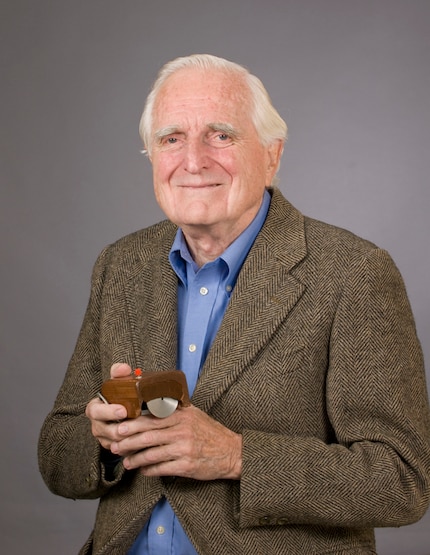
Engelbart's service is only recognised in 1990. The Massachusetts Institute of Technology grants him a 500'000 dollar inventor prize. The computer pioneer passes away in 2013. But luckily, he got to see his dream of a connected computer world fulfilled.
From big data to big brother, Cyborgs to Sci-Fi. All aspects of technology and society fascinate me.
Practical solutions for everyday problems with technology, household hacks and much more.
Show all